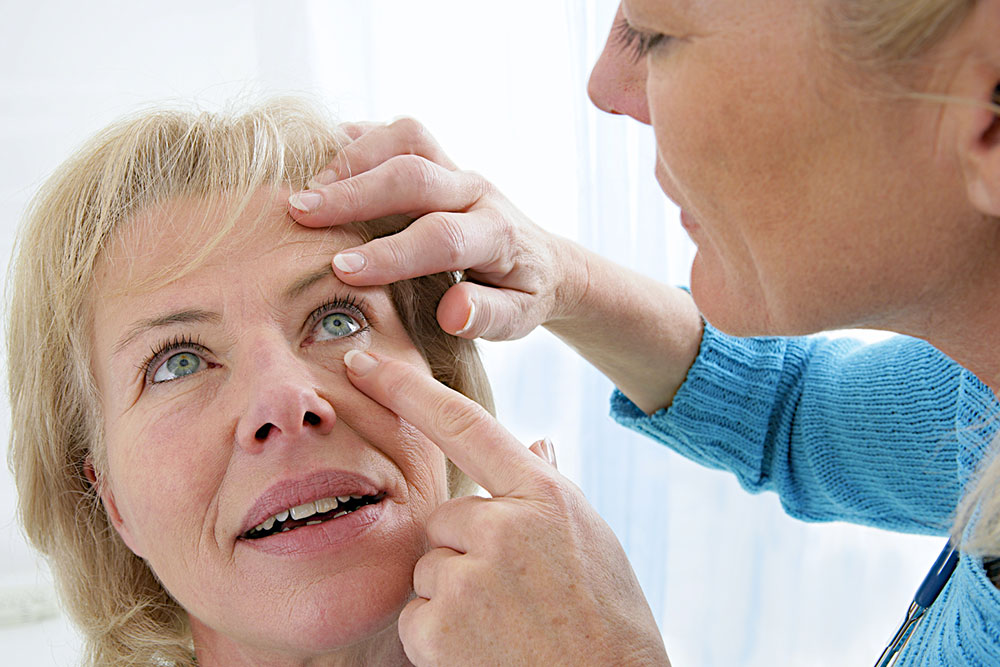
Macular degeneration – Types, causes, symptoms, and management
Macular degeneration usually develops in old age. As a result, it is also known as age-related macular degeneration or AMD. The condition affects the central part of the eye called the macula, leading to complications like distorted vision and even loss of vision if not treated promptly. This post delves deeper into the basics of macular degeneration, discussing its types, causes, symptoms, diagnostic methods, and treatment options for better management.
Types of macular degeneration
There are two types of this eye disorder:
- Dry macular degeneration
Around 80% of people with macular degeneration are diagnosed with this type, making it the most common. The eye’s macula gets thinner as people age, and a protein called drusen starts growing in clumps behind it, causing vision problems. The degeneration process in this type is gradual and usually affects one eye at a time. It is believed that the support membrane under the retina is damaged in dry macular degeneration. - Wet macular degeneration
Although uncommon, this is a serious condition known to cause severe vision loss. It develops when abnormal blood vessels start growing beneath the retina, leading to leakage of fluid and blood. The leakage creates a big blind spot in one’s central vision.
Causes and risk factors
There is no definite cause for the development of macular degeneration; however, experts have identified some risk factors that people should be aware of:
- Being 50 or older
- Frequently eating meals rich in saturated fats
- Being diagnosed with high blood pressure (hypertension) and high cholesterol
- Overexposing the eyes to the sun
These are just some of the many risk factors that can contribute to the illness. Those in the high-risk group should follow a lifestyle that is healthy and sustainable and speak to an expert to develop a strategy for lowering their risk.
Signs and symptoms
Macular degeneration can lead to several signs and symptoms, which individuals should look for, especially when at risk of developing the condition. Those who experience the signs should develop a management plan with the help of a doctor. While some symptoms vary from person to person, others are common. Here’s a brief look at the common symptoms one should keep track of:
- Blurry or fuzzy vision
- A dark, empty area or blind spot in the center of the vision field
- Straight lines that start looking wavy
- Difficulty recognizing familiar faces
A loss of central vision is perhaps the most important sign of this eye disorder, which makes tasks like reading, driving, and recognizing faces challenging. Besides the above, one may experience uncomfortable eye symptoms like irritation and pain. Overlooking these discomforts can cause the condition to worsen. The best approach after identifying the signs would be to visit an eye doctor, get a diagnosis, and follow the recommended management plan.
Diagnosis
A proper and early diagnosis is essential for proper management and care of any eye disorder. Here are some things to know about the diagnostic procedures and tests for macular degeneration:
- The doctor may inquire about the patient’s health history and symptoms and perform an eye exam to identify the issue.
- A pupil dilation test may be performed using eye drops, helping the expert get a better view of the patient’s retina.
- Sometimes, a visual acuity test is done to measure the patient’s ability to see objects placed at various distances. This is like a regular eye chart test.
- Amsler grid is a popular test to detect wet age-related macular degeneration using a checkerboard-like grid. The person is asked to identify if they can see any straight lines missing or wavy on the grid. If the answer is yes to either of the possibilities, it may point to wet age-related macular degeneration.
- Fluorescein angiography is also used to detect wet age-related macular degeneration. In this method, a special dye is administered into the patient’s arm, which passes through the retina. Then, a special camera is used to check for leakage or damage in the eye’s blood vessels.
Treatment and management
Unfortunately, there is no way to treat dry age-related macular degeneration. When diagnosed, the expert may only recommend therapies to help build visual skills and prevent the problem from worsening. For wet age-related macular degeneration, patients may be recommended treatment to reduce the damage caused by the leaky blood vessels in the retina and stabilize their vision.
When developing a management strategy for either type, the expert may consider factors like the patient’s age, the nature of the illness and its extent, the patient’s tolerance for certain treatments, and their personal preferences. They may also recommend remedies and lifestyle changes to manage the condition better.




